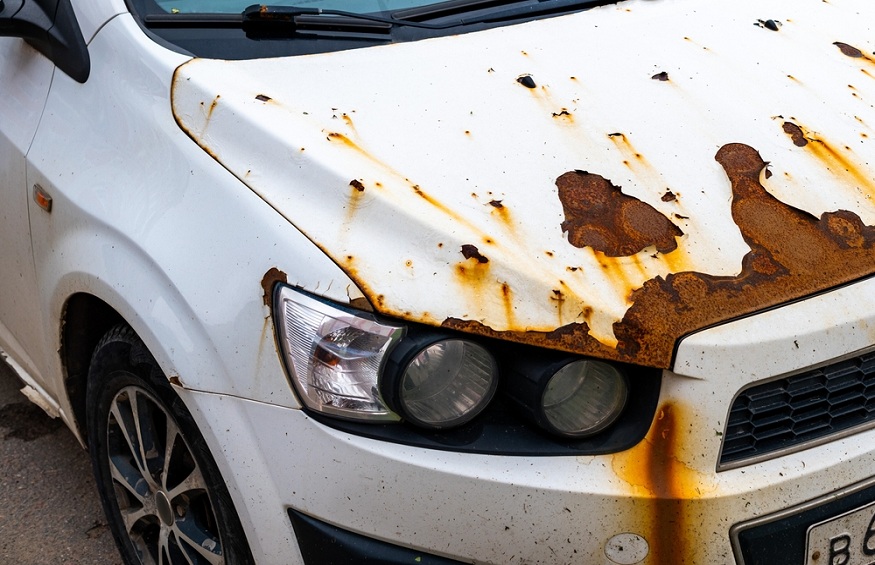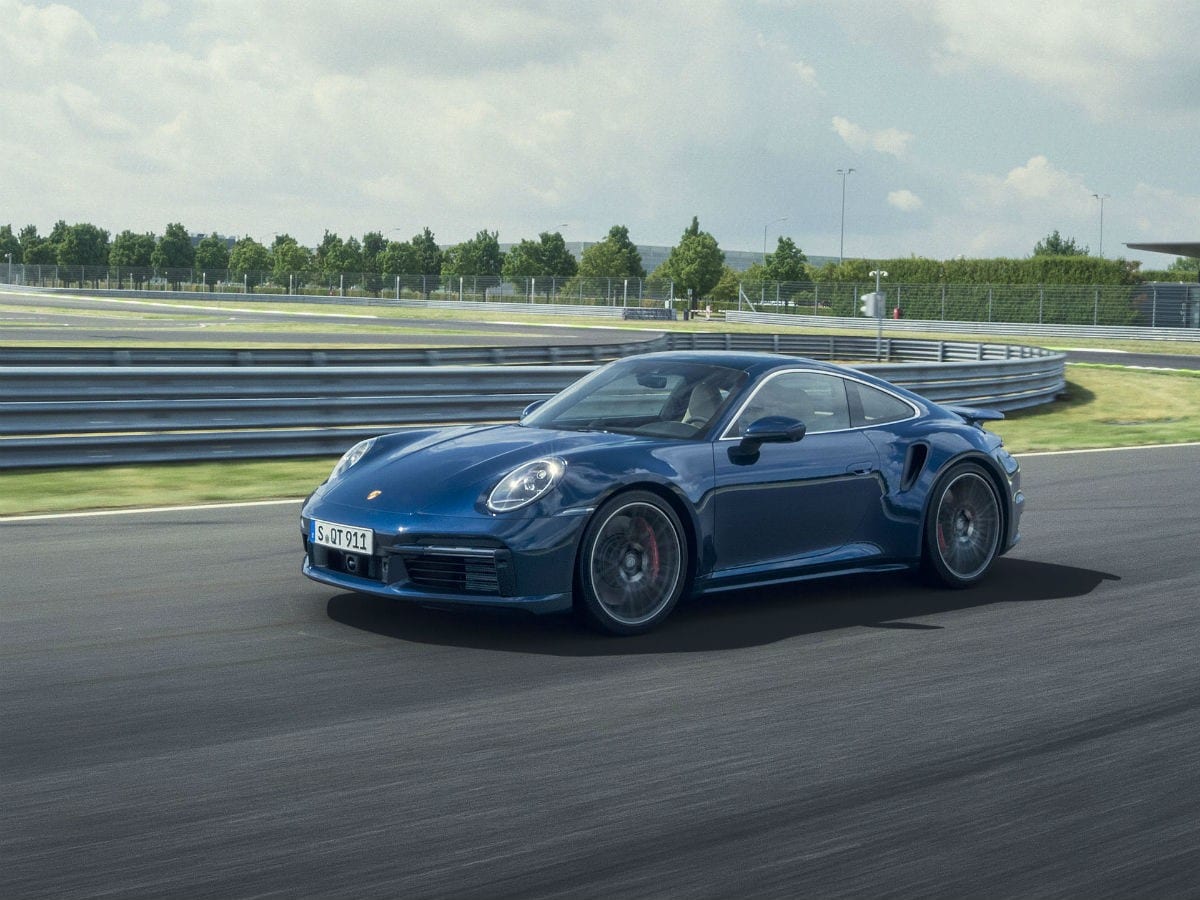Is your car showing signs of wear and tear? Rust can silently creep into your vehicle, causing unseen damage until it’s too late. But worry not – understanding the warning signs of rust is simpler than you think!
In this article, we’ll unveil the top 8 signs to check for rust damage in your car, making it easy for anyone to spot trouble. Whether you’re a car enthusiast or just a casual driver, this guide will help you keep your precious vehicle in top-notch condition. Don’t let rust sneak up on you; let’s dive in and learn how to protect your car from this sneaky adversary.
1. Visible Rust Spots
When it comes to your car, visible rust spots are like little warning signs telling you that something’s not right. These are patches on your car’s surface that look different from the usual paint wear and tear. Here’s what you need to know:
Visible rust on the car’s surface: Visible rust spots often appear as small reddish-brown or orange spots. They can be bumpy or rough, standing out from the smooth paint around them.
How to identify visible rust spots: Run your fingers or a cloth over the suspicious area. If it feels rough or uneven, there’s a good chance it’s rust. Also, keep an eye out for any discoloration on your car’s surface.
Importance of addressing visible rust promptly: Ignoring visible rust spots can lead to bigger problems. Rust spreads like a tiny infection, and if left unchecked, it can weaken your car’s body and affect its value. So, it’s best to deal with these spots as soon as you spot them to keep your car looking good and running smoothly.
Solution:
Regularly Inspect Your Car’s Paint and Use Touch-Up Paint for Minor Spots:
To tackle this issue, regularly inspect your car’s paint for any blisters or bumps. If you spot them, consider using touch-up paint to cover and protect the affected areas. This simple step can help prevent rust from getting worse and save you from costly repairs later on.
2. Bubble-Like Blisters
Have you ever noticed tiny bubbles on your car’s paint? They might look harmless, but they can be a sign of trouble brewing. Let’s take a closer look:
Bubble-like blisters on the paint: Those bubble-like blisters are pockets of rust hiding under the surface of your car’s paint. They form when moisture gets trapped underneath, causing the metal to corrode.
How to spot these blisters: Keep an eye out for small, raised bumps on your car’s paint. They can appear in various sizes and colours, often resembling tiny blisters.
Significance of blisters as an early warning sign: These blisters are like the car’s way of saying, “Help! I’m rusting!” They signal that rust is eating away at your car from the inside, and it’s time to act.
Dangers of ignoring bubble-like blisters:
If left untreated, these blisters can spread, causing more extensive and costly damage to your car’s body.
Solution:
Address blistered areas promptly by sanding, priming, and repainting: The good news is, you can prevent further damage by taking action early. Sand away the blistered area, apply primer and paint to keep your car’s body looking good and rust-free.
3. Flaky or Peeling Paint
Is your car’s paint starting to look like it’s shedding its skin? That’s what we call flaky or peeling paint, and it’s more than just a cosmetic concern. Let’s break it down in simple terms:
Flaky or peeling paint: Flaky or peeling paint is when the paint on your car’s surface starts coming off in small pieces or flakes, leaving patches of bare metal exposed.
How to recognize flaking or peeling paint: Look for areas on your car where the paint isn’t smooth anymore. You’ll notice patches that appear rough, uneven, or where the paint is lifting off the surface.
Why flaky paint indicates potential rust issues: Flaky paint is like an open invitation to rust. When the paint peels, it exposes the metal beneath it to moisture and air, creating the perfect conditions for rust to form.
Dangers of untreated flaking paint:
If you ignore flaking paint, it’s like ignoring a leaky roof; the problem will only get worse. Rust can eat away at the metal, weakening it and causing structural damage.
Solution:
Sand, prime, and repaint affected areas to prevent further rusting: The good news is that you can stop the rust in its tracks. Sand away the flaky paint, apply a primer, and repaint the affected areas. This seals the metal and prevents further rusting, keeping your car in better shape.
4. Soft or Weak Spots
Soft or weak spots in your car’s body may sound harmless, but they can be warning signs of a hidden danger – rust! Here’s what you need to know:
What soft or weak spots in the car’s body mean: When your car develops soft or weak spots, it means that the metal underneath is getting weaker. This usually happens due to rust eating away at the metal from the inside.
How to test for softness or weakness: Gently press on the suspected area with your finger or tap it with a small tool. If it feels spongy or gives way easily, it’s a sign of softness or weakness.
The implications of soft or weak spots: Soft spots indicate that the metal is thinning, making your car’s structure less safe. They can compromise your car’s integrity and, in severe cases, lead to accidents.
Dangers of ignoring soft or weak spots:
Ignoring these spots can be risky. The weakened metal may not provide the necessary protection during a collision, increasing the chances of injury.
Solution:
Cut out and replace weakened metal sections to prevent rust from spreading:
The best solution is to remove the weakened metal and replace it with new, rust-free material. This prevents the rust from spreading and ensures your car stays safe on the road. Don’t delay addressing soft or weak spots; your safety is at stake!
5. Unusual Odours
Have you ever noticed a strange smell inside your car? Well, that odour might be trying to tell you something important about your car’s health. Let’s explore why unusual odours can be a warning sign of rust damage and what you should do about it.
The odour associated with rust: When rust starts to form in hidden places of your car, it often creates a musty or metallic smell. This smell can be quite distinct and different from the usual car odours.
How to detect unusual odours in your car: Detecting unusual odours is as simple as using your nose. If you notice a smell that doesn’t seem right, pay attention.
Why unusual odours are a red flag for rust damage: Unusual odours in your car are like an alarm bell. They signal that rust may be eating away at your vehicle’s hidden parts, potentially weakening its structure.
Dangers of neglecting unusual odours
Ignoring these odours could lead to severe rust damage, compromising your car’s safety and longevity. Rust can weaken important components, making your car less reliable.
Solution:
Investigate and repair the source of the rust odour, which may involve treating affected areas with rust inhibitors:
If you detect an unusual smell, it’s essential to investigate and address the source promptly. Look for rusted areas, and consider using rust inhibitors to stop the rust from spreading. Preventing further damage will keep your car running smoothly for longer. However, if your car is too old to get repaired or damaged then consider other options like old car removal service.
6. Rust on Suspension Components
Rust on suspension parts might seem harmless, but it’s like a silent saboteur in your car’s performance. Here’s what you need to know:
Rust on suspension parts: Look out for reddish-brown patches or flaky areas on your car’s suspension. These are telltale signs of rust creeping in.
The dangers of rust affecting suspension: Rust weakens your car’s suspension, making your ride less stable and comfortable. It can even lead to accidents if left unchecked.
Importance of regular suspension inspection: Checking your suspension regularly is essential. It helps you catch rust early, ensuring your car remains safe to drive.
Dangers of rust weakening suspension components:
When rust takes hold, it can weaken critical suspension parts, like springs and struts. This compromises your car’s ability to absorb shocks, impacting handling and safety.
Solution:
Replace rusted suspension parts to maintain car safety and performance: If you spot rust on your suspension, don’t delay. Replace the affected parts promptly to keep your car safe and performing at its best. Your car and your passengers will thank you for it!
7. Brake and Fuel Line Rust
Rust on brake and fuel lines might seem harmless, but it’s a serious threat to your safety on the road. If you spot any signs of rust, don’t ignore them! Here’s what you need to know:
Recognizing rust on brake and fuel lines: If you see reddish-brown spots or flakes on your car’s brake and fuel lines, that’s rust. It can weaken the lines, making them prone to leaks and breakages.
Safety risks associated with rusted lines: Rusted lines can lead to brake or fuel failure. Imagine losing control while driving – it’s a nightmare! Rust weakens the lines, making accidents more likely.
Regular maintenance to prevent line rust: Regular checks can save you from trouble. Keep your car dry and clean, especially underneath, where rust often starts. Regular inspections by a mechanic are crucial.
Dangers of compromised brake and fuel lines:
Weak lines mean inefficient brakes and potential fuel leaks. In emergencies, a car with compromised lines might fail to stop, leading to disastrous consequences.
Solution:
Regularly inspect and replace rusted brake and fuel lines to ensure safety:
Don’t wait for the worst to happen. Replace rusty lines immediately. It might cost a bit, but your safety is worth every penny. Regular inspections ensure you catch rust early, keeping you and your passengers safe on the roads. In case, you’re no longer using your vehicle and planning to sell then do not forget to submit Notice of Disposal in NSW to avoid fines and penalties set by the government.
8. Undercarriage Rust
Undercarriage rust, often hidden from plain sight, is a common menace that can silently damage your car’s foundation. This type of rust occurs underneath your vehicle, affecting vital components that are crucial for your car’s stability and safety.
Undercarriage Rust: Undercarriage rust is the corrosion that forms on the metal parts beneath your car, caused by exposure to moisture, salt, and debris. It weakens the structural integrity of your vehicle over time.
How to Inspect the Undercarriage for Rust: Regularly inspect the undercarriage by crouching down and looking beneath your car. Check for reddish-brown patches, flaking metal, or any signs of corrosion on the frame, exhaust system, or suspension components.
Consequences of Neglecting Undercarriage Rust: Ignoring undercarriage rust can lead to serious problems. It weakens the frame, making your car less safe in case of accidents. Rusty suspension components can affect your car’s handling, leading to potential accidents.
Dangers of Untreated Undercarriage Rust:
If left untreated, undercarriage rust can spread rapidly, causing parts to break or fail. This can result in costly repairs or even render your car unsafe to drive.
Solution:
The best way to prevent undercarriage rust is by rust-proofing your vehicle. This involves applying a protective coating to the undercarriage to shield it from moisture and salt. Regularly cleaning the undercarriage to remove dirt and debris also goes a long way in preventing rust buildup. By taking these simple steps, you can ensure the longevity and safety of your car.
Conclusion
In conclusion, recognizing the early signs of rust damage in your car is crucial for safety and longevity. Ignoring these warning signals can lead to costly repairs and compromise your vehicle’s performance. Regular inspections and prompt action to address rust issues are the keys to ensuring your car remains in good condition on the Australian roads.



